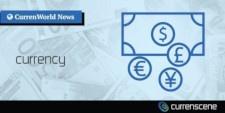The haven-linked US Dollar[1] tumbled this past week, averaging its sharpest decline against a basket of its major counterparts since at least 1986[2]. This is as Wall Street[3] bounced with the Dow Jones and S&P 500 rallying the most over 5 days since 1974 and 2009 respectively. Anti-fiat gold prices[4] also climbed, surging the most last week since 2008. Emerging market capital outflows cooled.
The backdrop for this improvement in market sentiment during the coronavirus outbreak has been aggressive stimulus measures undertaken by not just the US, but also countries globally. Focusing on the former, the Federal Reserve introduced open-ended quantitative easing as the government worked together to pass a US$2 trillion virus relief bill to cushion the impact of the virus.
Going forward, markets will have to weigh stimulus against incoming data that will continue revealing the severity global growth is facing. The Euro[5] has employment figures from Germany to watch as the United States releases March’s non-farm payrolls report. This follows a record rise in jobless claims. As April gets going, estimates point to the worst contraction in NFPs[6] since 2010.
Before the coronavirus outbreak, global growth slowed over the past few years amid the US-China trade war. All eyes were on the world’s largest economy as it relatively outperformed. Now it holds the most cases of COVID-19, surpassing Italy and China. The longer the country embraces social isolation measures, the more consumption (2/3 of GDP) may weigh on domestic and international growth.
Fundamental Forecasts:
US Dollar May Rise if ISM, NFP and PMI Data Spurs Haven Demand[7]
The US Dollar could rise if key ISM, PMI and nonfarm payrolls data causes recession fears to



